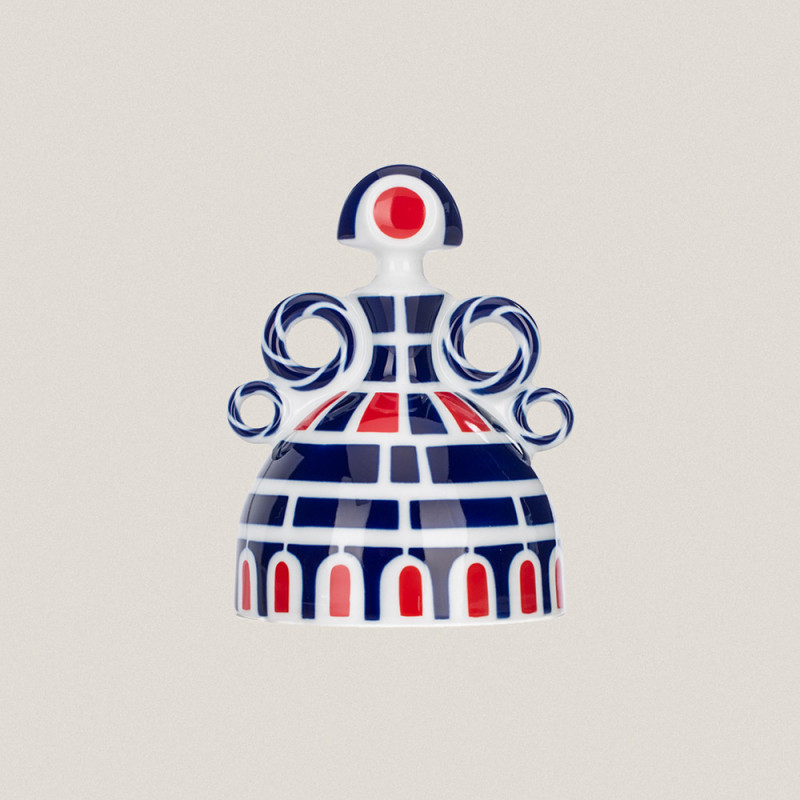Big Blue Menina
Ref: 05011080
Description: Diego Rodríguez de Silva y Velázquez (Sevilla, 1599 - Madrid, 1660) painted the Royal family in 1656 during the reign of Felipe IV (Philip IV), penultimate monarch of the Austrias dynasty. It was more than 10 years since the fall of the Count-Duke of Olivares’ privileged position as favorite (1643) and 8 years since the end of the Thirty Years’ War (1648) which resulted in the Peace of Westphalia, whose consequences for Spain and the Felipe IV’s reign were a clear decadence. In the year this canvas was painted, the King was very aged and with evident signs of fatigue, well represented in the work of the same author. With the title The Family of Felipe IV (in which Velázquez paints a palace scene and shows the Infanta Margarita with her maids of honor) appear in the inventory of 1794. Sometime later, in 1843, it appears cataloged in the Prado Museum by its director José de Madrazo, with the name of Las Meninas, title that had a great literary success and that has lasted until today. The painting was entitled Las Meninas in reference to two characters that appear on it and based on the description of the work that makes the painter and writer Antonio de Palomino y Velasco (1653-1726) in his book Museo pictórico. He describes in this book that "two young ladies accompany the Infanta, they are two meninas". The word "menina" is of Portuguese origin and is the female equivalent of page. This term was used with the daughters of the nobility entering the Palace as maids of honor of the Infantas and formed part of their entourage. They only received this appellative until they reached their coming-out, thus they were always very young dames. Other titles that appear in the inventories are: The Empress of Spain with her ladies and servants and a dwarf where the painter portrayed himself painting. Measures: Height: 15 cm. Material: Porcelain. Care: Clean with a soft damp cloth.
Big Blue Menina
Ref: 05011080
Sargadelos, through his ceramics, reinterprets this figure in homage to Velázquez's best-known work, Las Meninas.










